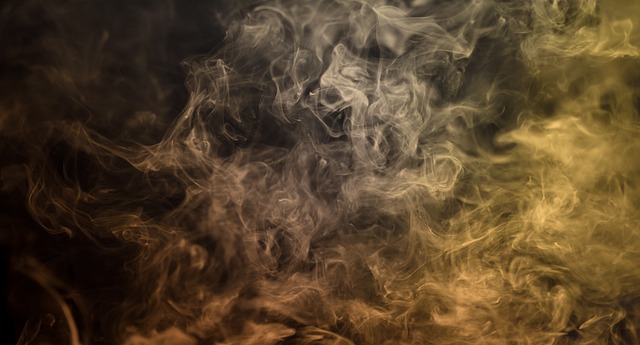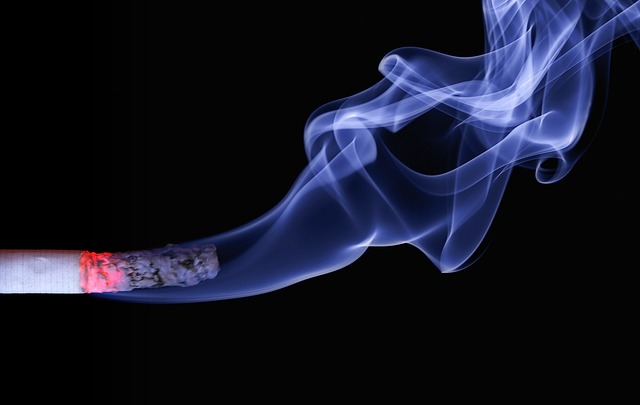Teeth Whitening After Smoking: Proven Methods
Are years of smoking staining your teeth and leaving you with a less confident smile? If you’re ready to reclaim your pearly whites and restore your self-assurance, you’ve come to the right place. In this article, we will explore proven methods for teeth whitening after smoking, providing you with the knowledge and confidence to embark on your journey towards a brighter, more radiant smile. Say goodbye to those stubborn tobacco stains and hello to a confident, smoke-free grin. Let’s dive in!
1. The Science Behind Teeth Discoloration: Understanding the Impact of Smoking
Teeth discoloration is a common concern among smokers, and understanding the science behind it can help shed light on the impact of smoking on dental health. Cigarette smoke contains numerous harmful substances that can lead to staining and discoloration of teeth. Here’s a closer look at the science behind teeth discoloration and how smoking plays a role:
1. Tar: One of the main culprits behind teeth discoloration is tar, a sticky substance found in cigarette smoke. Tar easily adheres to tooth enamel, causing yellow or brown stains over time.
2. Nicotine: Nicotine, the addictive component of cigarettes, is another factor contributing to teeth discoloration. This colorless substance can turn yellow when it reacts with oxygen, leading to a noticeable yellowing of the teeth.
3. Tobacco-specific nitrosamines (TSNAs): TSNAs are a group of chemicals found in tobacco products that are known to discolor teeth. These compounds can penetrate the tooth enamel, resulting in stubborn brown stains that are difficult to remove through regular brushing.
4. Heat and smoke: The heat generated while smoking and the smoke itself can also have a negative impact on tooth color. The high temperatures can cause the tooth enamel to become porous, making it more susceptible to staining by the chemicals present in cigarette smoke.
Understanding the science behind teeth discoloration caused by smoking highlights the importance of maintaining good oral hygiene and seeking professional dental care. Regular brushing, flossing, and dental cleanings can help minimize the effects of smoking on tooth color. Additionally, quitting smoking altogether is the most effective way to prevent further discoloration and improve overall dental health.

2. Effective Teeth Whitening Methods: Breaking Down the Options
In the quest for a brighter smile, there are numerous teeth whitening methods available. Each method has its own unique benefits and considerations. Let’s explore some of the most effective options:
1. In-Office Teeth Whitening: This professional treatment is performed by a dentist and offers quick and noticeable results. During the procedure, a powerful bleaching agent is applied to the teeth and activated by a special light or laser. The dentist carefully monitors the process to ensure optimal outcomes. In-office teeth whitening is ideal for individuals seeking immediate and dramatic improvements in their smile.
2. At-Home Whitening Kits: These kits provide a convenient and cost-effective way to whiten your teeth at home. They usually include custom-fitted trays and a whitening gel that contains hydrogen peroxide or carbamide peroxide. To use, simply fill the trays with the gel and wear them for a specified amount of time each day. At-home whitening kits offer gradual results and can be a suitable choice for individuals who prefer the flexibility of whitening their teeth in the comfort of their own home.

3. Professional Teeth Whitening: A Reliable Solution for Smokers
Smokers often struggle with stained and discolored teeth due to the nicotine and tar found in cigarettes. While there are various over-the-counter whitening products available, professional teeth whitening is a reliable and effective solution specifically tailored for smokers.
One of the main advantages of professional teeth whitening is its ability to remove deep stains that are difficult to eliminate with home remedies or store-bought products. Dentists use advanced bleaching agents and techniques to penetrate the enamel and break down stubborn stains caused by smoking. This ensures a thorough and long-lasting whitening effect. Additionally, professional teeth whitening treatments are customizable to match your desired level of brightness, giving you a natural-looking, radiant smile.
- Professional teeth whitening is a safe and non-invasive procedure. Dentists are trained to carefully evaluate your oral health before proceeding with the treatment, ensuring that it is suitable for you.
- During the procedure, a protective gel or rubber shield is applied to the gums and soft tissues to prevent irritation or sensitivity.
- The bleaching agents used by professionals are highly concentrated and provide more effective results than over-the-counter products.
- Professional teeth whitening can be completed in just one visit to the dentist, saving you time and effort compared to at-home treatments that may take weeks or months to show noticeable results.
By choosing professional teeth whitening, smokers can regain their confidence with a brighter and more youthful smile. It is important to consult with a dental professional to determine the best treatment plan based on your individual needs and oral health.

4. Home Remedies for Teeth Whitening: Natural Approaches to Regaining Your Bright Smile
When it comes to teeth whitening, there are numerous natural approaches that can help you regain your bright smile without the use of harsh chemicals. These home remedies are not only effective but also safe for your teeth and gums. Here are some tried and tested methods that can help you achieve a dazzling smile:
- Baking Soda: This common household ingredient is a popular remedy for teeth whitening. Its mild abrasive properties help remove surface stains on your teeth, giving them a whiter appearance. You can mix baking soda with water to form a paste and brush your teeth with it a few times a week.
- Oil Pulling: This ancient Ayurvedic technique involves swishing oil, such as coconut or sesame oil, in your mouth for about 15-20 minutes. The oil acts as a natural cleanser, pulling out toxins and bacteria from your teeth and gums. Regular oil pulling can lead to whiter teeth and improved oral health.
- Strawberries: These delicious berries contain a natural enzyme called malic acid, which can help remove surface stains on your teeth. You can mash up a few strawberries and apply the paste directly to your teeth or mix it with baking soda for an extra whitening boost.
By incorporating these natural remedies into your oral care routine, you can effectively brighten your smile and boost your confidence. However, it’s important to remember that these methods may not provide instant results and consistency is key. If you have severe tooth discoloration or concerns about your oral health, it’s best to consult with a dentist for professional advice and treatment options.

5. Over-the-Counter Teeth Whitening Products: Worth the Investment?
When it comes to achieving a brighter smile, over-the-counter teeth whitening products have become increasingly popular. But are they worth the investment? Let’s take a closer look at the pros and cons of these products.
Pros:
- Convenience: Over-the-counter teeth whitening products are readily available at most drugstores and can be used in the comfort of your own home.
- Affordability: Compared to professional teeth whitening treatments, over-the-counter products are generally more budget-friendly.
- Variety of options: From whitening strips to gels, there is a wide range of products to choose from, allowing you to find the one that suits your preferences and needs.
Cons:
- Effectiveness may vary: Over-the-counter products often contain lower concentrations of whitening agents, which means they may not deliver the same results as professional treatments.
- Potential for sensitivity: Some individuals may experience tooth sensitivity or gum irritation when using certain over-the-counter products.
- Longer treatment duration: Achieving noticeable results with over-the-counter products may take longer compared to professional treatments.
6. The Role of Dental Hygiene in Maintaining Whitened Teeth
Dental hygiene plays a crucial role in maintaining the whiteness of your teeth after undergoing whitening treatments. By following a proper oral care routine, you can ensure that your teeth stay bright and beautiful for a longer period of time.
Here are some key practices to incorporate into your dental hygiene routine:
- Brushing: Brush your teeth at least twice a day using a whitening toothpaste. This helps remove surface stains and prevents the buildup of plaque.
- Flossing: Floss daily to remove food particles and plaque from between your teeth, where your toothbrush cannot reach.
- Mouthwash: Rinse your mouth with an alcohol-free mouthwash to freshen your breath and kill bacteria that can cause staining.
- Avoid staining foods and drinks: Limit your consumption of highly pigmented foods and beverages such as coffee, tea, red wine, and berries, as they can cause tooth discoloration over time.
Additionally, regular dental check-ups and professional cleanings are essential to maintain the whiteness of your teeth. Your dentist can remove any stubborn stains and provide further guidance on maintaining your bright smile.
7. Long-Term Maintenance Tips: Sustaining Teeth Whitening Results for Smokers
Smoking can have a significant impact on the appearance of your teeth, often leading to yellowing or discoloration. However, with proper long-term maintenance, you can sustain the results of teeth whitening treatments and maintain a bright smile. Here are some effective tips to help smokers maintain their teeth whitening results:
- Regular dental cleanings: Schedule regular dental cleanings with your dentist every six months. Professional cleanings can remove stubborn stains and plaque buildup, ensuring your teeth stay white and healthy.
- Quit smoking: If you’re serious about maintaining your teeth whitening results, quitting smoking is the best long-term solution. Smoking not only stains teeth but also increases the risk of oral health problems. Seek support from friends, family, or professionals to help you on your journey to a smoke-free life.
- Limit staining substances: Minimize your consumption of staining substances such as coffee, tea, red wine, and dark-colored sodas. If you do indulge, rinse your mouth with water afterward to minimize the impact on your teeth.
Furthermore, practice good oral hygiene by brushing your teeth at least twice a day with a whitening toothpaste. Consider using a toothbrush with soft bristles to avoid further enamel erosion caused by smoking. Floss daily to remove plaque and food particles, preventing them from causing discoloration. Additionally, consider using a whitening mouthwash or strips to enhance and maintain the brightness of your smile. By following these long-term maintenance tips, smokers can enjoy the benefits of teeth whitening and maintain a radiant smile.
Frequently Asked Questions
Q: Is it possible to whiten teeth after smoking?
A: Yes, it is definitely possible to whiten teeth after smoking. In fact, there are proven methods that can effectively remove tobacco stains and restore the natural whiteness of your teeth.
Q: How does smoking affect the color of teeth?
A: Smoking tobacco products can have a significant impact on the color of your teeth. The nicotine and tar present in cigarettes can cause stubborn yellow or brown stains to develop on the tooth enamel over time.
Q: What are the proven methods for teeth whitening after smoking?
A: Several proven methods can help whiten teeth after smoking. These include professional teeth whitening treatments, at-home whitening kits, whitening toothpaste, and natural remedies.
Q: Are professional teeth whitening treatments effective for smokers?
A: Yes, professional teeth whitening treatments can be highly effective for smokers. Dentists use advanced techniques and bleaching agents that can penetrate deep into the enamel, effectively removing tobacco stains and brightening your smile.
Q: Can at-home teeth whitening kits effectively remove tobacco stains?
A: At-home teeth whitening kits can indeed be effective in removing tobacco stains. These kits typically include whitening gels or strips that contain hydrogen peroxide, which helps break down the stains and restore the natural whiteness of your teeth.
Q: Is whitening toothpaste effective for smokers?
A: Whitening toothpaste can help reduce surface stains caused by smoking, but it may not be as effective in removing deeper tobacco stains. However, using whitening toothpaste regularly can contribute to maintaining a brighter smile.
Q: Are there any natural remedies that can whiten teeth after smoking?
A: Yes, there are natural remedies that can aid in whitening teeth after smoking. For example, baking soda mixed with hydrogen peroxide can act as a gentle abrasive to remove surface stains. Additionally, rubbing the inside of an orange or lemon peel on teeth can also help brighten your smile naturally.
Q: How long does it take to see results when whitening teeth after smoking?
A: The timeframe for seeing results when whitening teeth after smoking can vary depending on the method used. Professional treatments usually provide noticeable results in a single session, while at-home kits may take a few weeks of consistent use to achieve desired results.
Q: Are there any precautions to take when whitening teeth after smoking?
A: It is important to follow the instructions provided with any teeth whitening product or treatment. Overuse of whitening products or using them incorrectly can damage tooth enamel or cause tooth sensitivity. Consulting with a dental professional is always recommended to ensure you are using the right method for your specific needs.
Q: How can I prevent teeth from becoming stained again after whitening?
A: To maintain the whiteness of your teeth after whitening, it is crucial to avoid smoking and limit the consumption of foods and beverages that can cause staining, such as coffee, tea, and red wine. Regular brushing, flossing, and dental check-ups will also help keep your teeth looking their best.
Final Thoughts
In conclusion, there are proven methods available for teeth whitening after smoking that can effectively restore your smile to its former brilliance. By understanding the impact of smoking on your dental health and applying these tried-and-tested techniques, you can achieve noticeable results.
Firstly, professional teeth whitening treatments administered by dental professionals offer the most reliable and efficient results. These treatments utilize advanced technologies and potent whitening agents that effectively combat the discoloration caused by smoking.
Additionally, diligent oral hygiene practices play a crucial role in maintaining the whiteness of your teeth. Regular brushing with whitening toothpaste, flossing, and using mouthwash can help remove surface stains and prevent further discoloration.
Moreover, incorporating natural remedies such as baking soda and hydrogen peroxide into your oral care routine can provide noticeable improvements. These readily available ingredients possess whitening properties that help combat the effects of smoking on your teeth.
It is important to note that quitting smoking altogether is the best long-term solution for maintaining a bright smile. Not only will it prevent further discoloration, but it will also significantly improve your overall oral health.
Remember, achieving a whiter smile after smoking is a gradual process that requires patience and consistency. By following these proven methods and seeking professional advice, you can regain your smile’s radiance and boost your confidence.
So, take charge of your dental health today, explore these proven methods, and start your journey towards a brighter, healthier smile.







